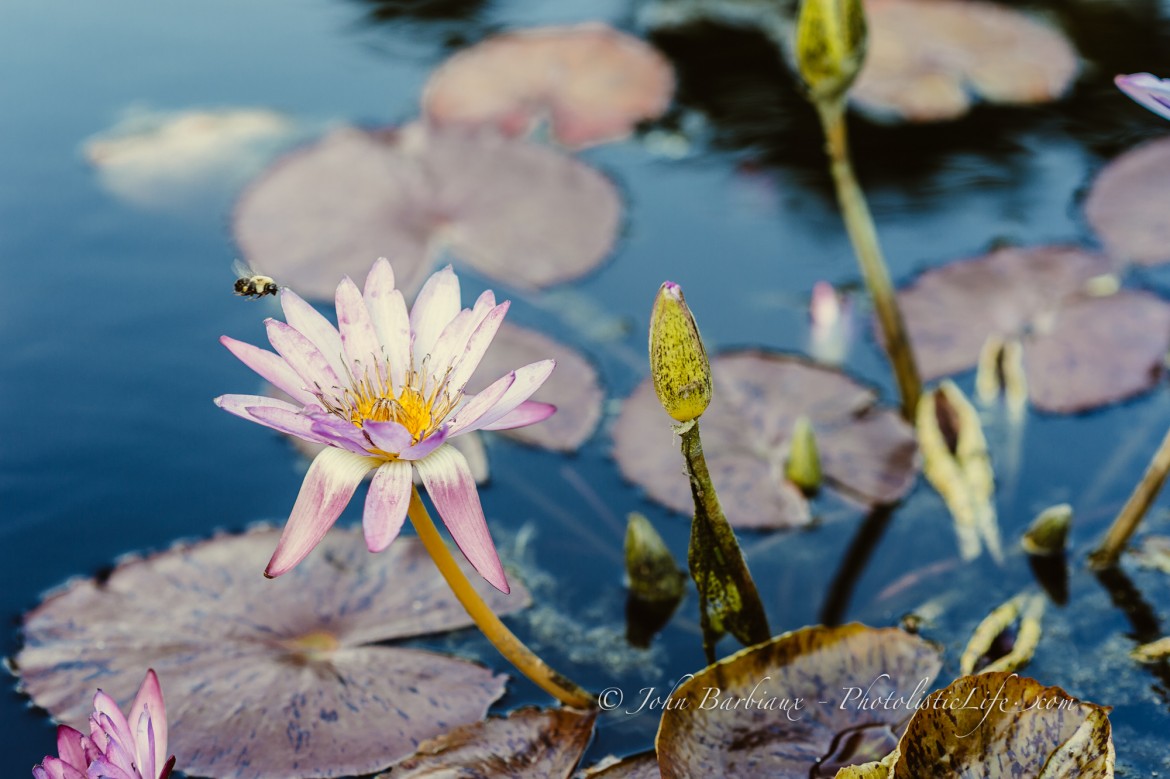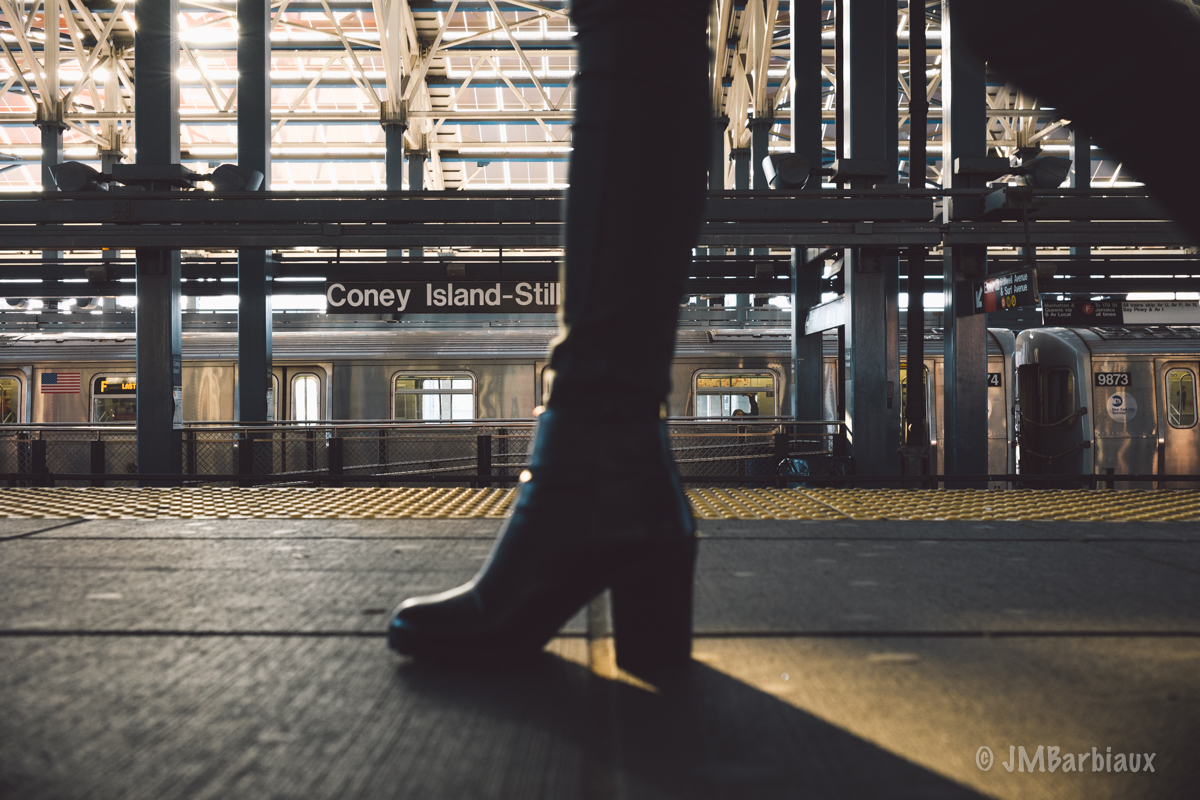Everyone loves flowers, it’s a law… If you don’t love flowers then you probably don’t like cute little babies or kittens either. For the rest of us normal people, who like flowers, photographing a garden is a fun way to pass the time in the spring, summer, or fall (all year round in some places). There is an entire little world in your garden full of mammals, insects, and a-hole spiders. It’s simple enough to capture a photograph of your garden but more difficult if you’d like to capture photographs that will make others stop and reflect.
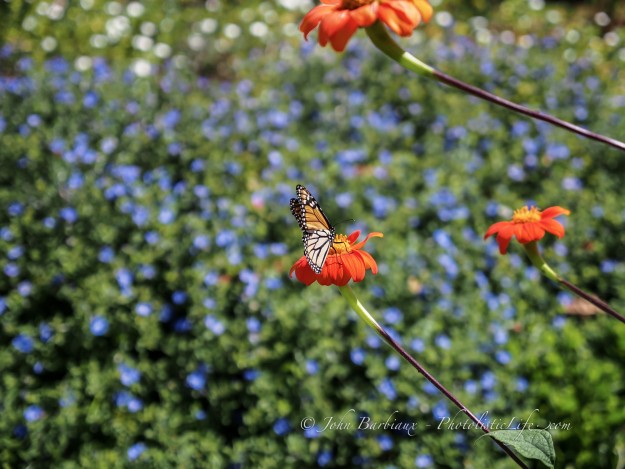 My Monet by John Barbiaux – Taken in Kauai Hawaii with the Olympus OMD EM5
My Monet by John Barbiaux – Taken in Kauai Hawaii with the Olympus OMD EM5
Below you’ll find some quick tips to making your garden photography more interesting. You don’t need a fancy camera, a macro lens, special lighting, or even extensive camera knowledge. Flowers do most of the heavy lifting for you, they have a beautiful color and look as if they are striking poses just for your camera… Unless it’s a Venus Fly Trap, they are striking poses to draw you close and then BAM! they eat your face off.
Depth Of Field
This may be the single most beneficial tip I could share with you. Using depth of field makes it feel as if the flower could jump right out of your photograph. All of the photographs in this article take advantage of depth of field, that is why they seem three-dimensional rather than just flat images.
Depth Of Field
The distance between the nearest and the furthest objects that give an image judged to be in focus in a camera.You don’t need a fancy camera to achieve this, even my iPhone can do this. If you are using an automagic camera then you’ll want to get as close to your subject as possible (and still be able to achieve focus, if you can’t you may need to back up just a little). Once you get close to your subject you’ll notice your background begins to blur out of focus, this is a good thing.
If you have a more advanced camera and are familiar with how to use the aperture then you’ll want to open your aperture fairly wide (be careful not to go too wide as you may end up with a very small section of the subject in focus). The closer you get to your subject the more you’ll render the background out of focus (also called bokeh).
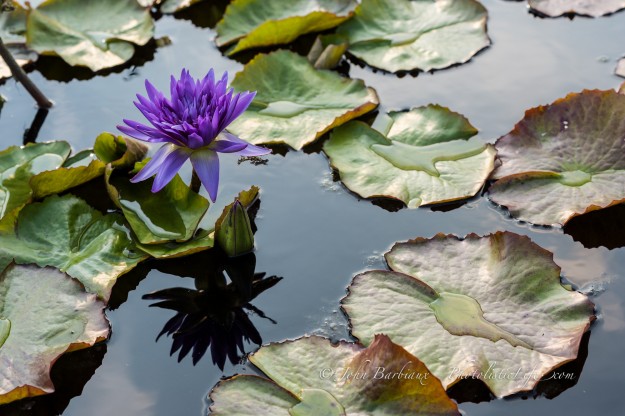 Balance is achieved by using the lily pads on the right hand of the image. The lilies gain visual weight by their number, texture, and size.
Balance is achieved by using the lily pads on the right hand of the image. The lilies gain visual weight by their number, texture, and size.
Balance
Try to keep your subject balanced in the frame, this does not mean the subject should be smack in the middle though. Balance is achieved many different ways; size, texture, color, etc.. It’s important to balance any photograph but even more so when you’re photographing flowers. Images without balance seem unsettling and can make viewers feel on edge. Flowers should be balanced to give viewers that calming feeling you get when you walk through your garden.
Think of balance the same as you would a Seesaw, an object on one side of the frame should be balanced on the other side. Sometimes we balance subjects with other objects, bright colors, or complex patterns. For example, basketball on one side of the frame can easily be balanced by a red tennis ball on the other… The color red ads weight to the tennis ball giving it equal visual weight to the larger basketball.
Balance is actually a very complex compositional tool that deserves an entire article (in the works) of it’s own so please forgive me for not going into more detail. Bookmark PhotolisticLife and check back often for my upcoming article on Visual Balance.
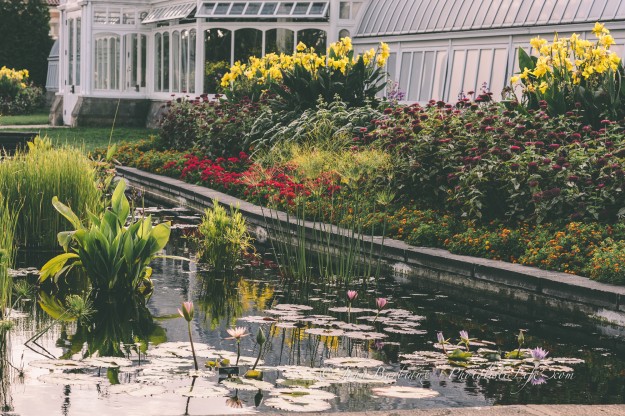 The garden in this image is beautiful but he picture is less than stunning. It’s busy and full of subjects that compete for your attention. By moving closer and isolating an interesting subject you can enhance the beauty of this garden.
The garden in this image is beautiful but he picture is less than stunning. It’s busy and full of subjects that compete for your attention. By moving closer and isolating an interesting subject you can enhance the beauty of this garden.
Isolate Interesting Subjects
Gardens are typically a cornucopia of size, shapes, and colors… Trying to capture everything going on in the garden in one single photograph can often disappoint even the most veteran photographers (above image). We often relate landscape photography, the part where we want to capture large areas in one frame, with garden photography but we’re left with busy scenes where many beautiful subjects compete with one another instead of complement one another.
Be deliberate and think about what specific subjects attract your eye… What about this garden makes you want to photograph it. If you have trouble isolating a specific subject that you want to photograph try affixing a longer focal length lens (85mm or longer) onto your camera and force yourself to spend the day using it. You’ll find that with a longer focal length you’re forced to choose smaller areas to photograph rather than trying to stuff as much as you can into one frame.
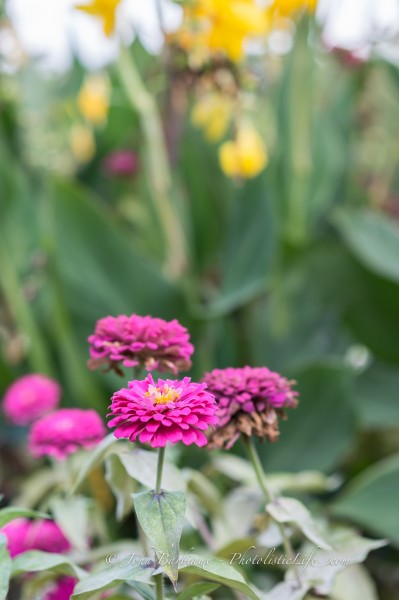 A simple change of perspective (by moving the camera up a little) I was able to move the distracting yellow flowers in the background up high enough that they didn’t detract from the image. Instead I used the green beneath them to act as a sort of back drop to enhance the colors of the flowers in the foreground.
A simple change of perspective (by moving the camera up a little) I was able to move the distracting yellow flowers in the background up high enough that they didn’t detract from the image. Instead I used the green beneath them to act as a sort of back drop to enhance the colors of the flowers in the foreground.
Backgrounds
While photographing flowers it’s important to be mindful of your background. Whether or not you’re shooting wide open (with a large aperture that leaves your background a pleasant blur of bokeh) you’ll want to make sure your background enhances your subject rather than competes with it. There are many bright, beautiful colors in a garden so you may have to move around your subject until you have a background that doesn’t take attention away from your subject.
There is nothing wrong with having bright colors in the background so long as those colors aren’t making it difficult to spot the subject you want to isolate. You certainly don’t want a Where’s Waldo situation with your subject. Make sure your subject stands out from the background by choosing a background that contrasts with the subject rather than camouflage it.
These are just a few things than can make a world of difference to your garden photography. If you really enjoy photographing flowers then be sure to read my article, How To Photograph Flowers. If you have some great flower or garden photography you’d like to share with the rest of us be sure to post it on PhotolisticLife’s Facebook page.

